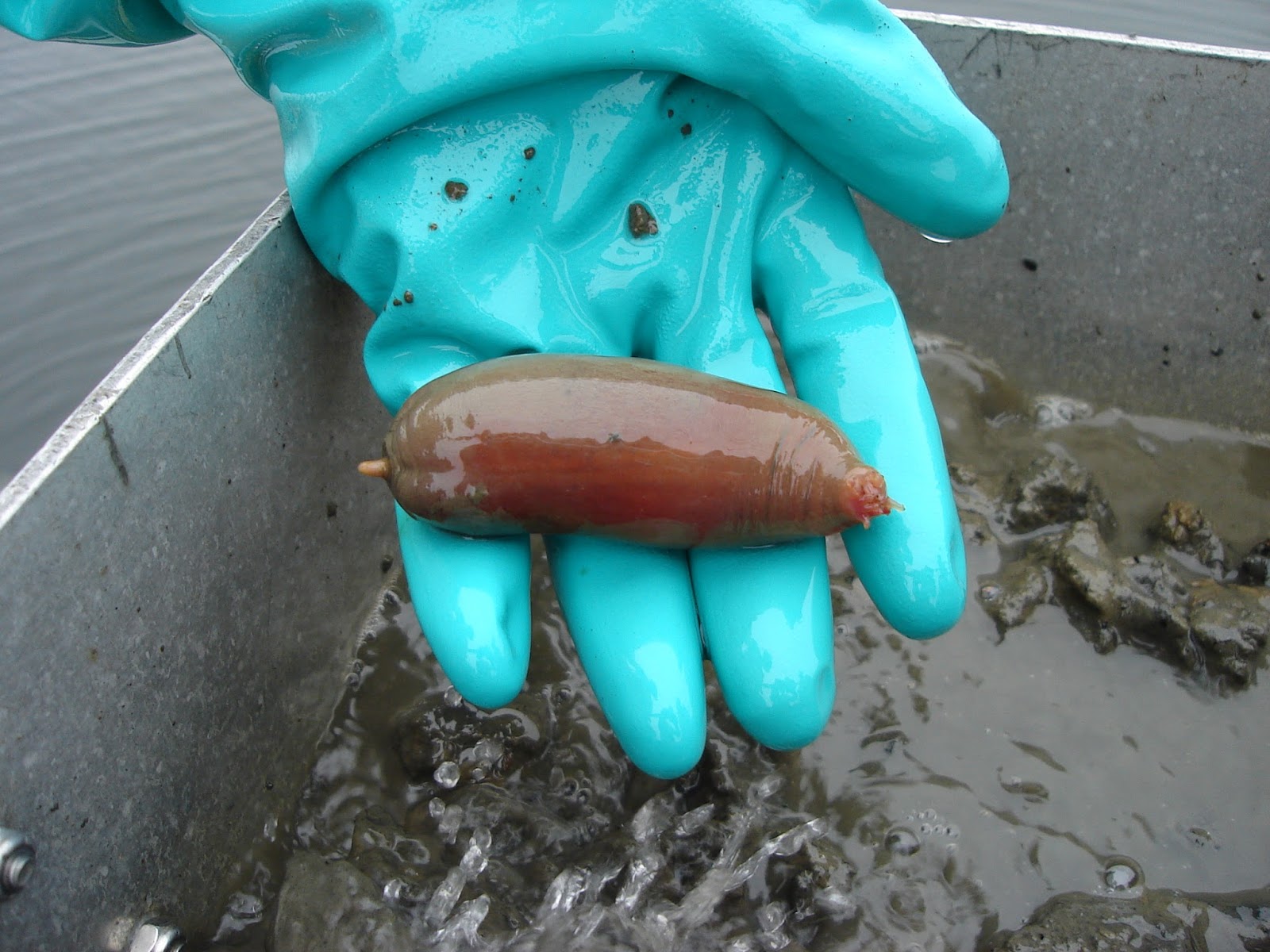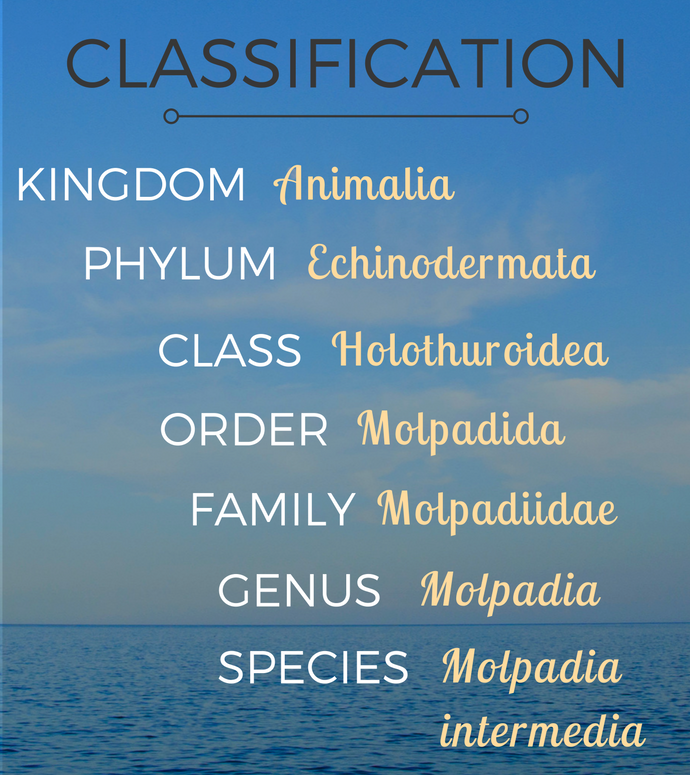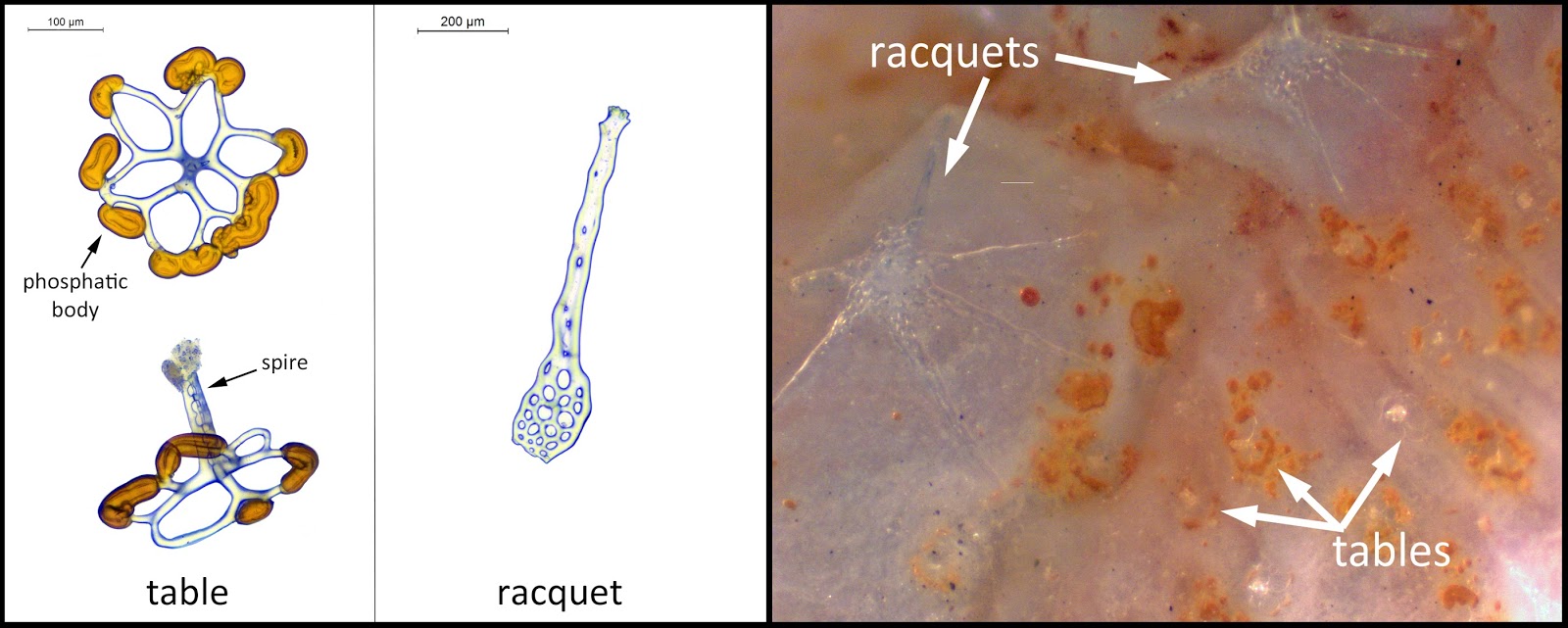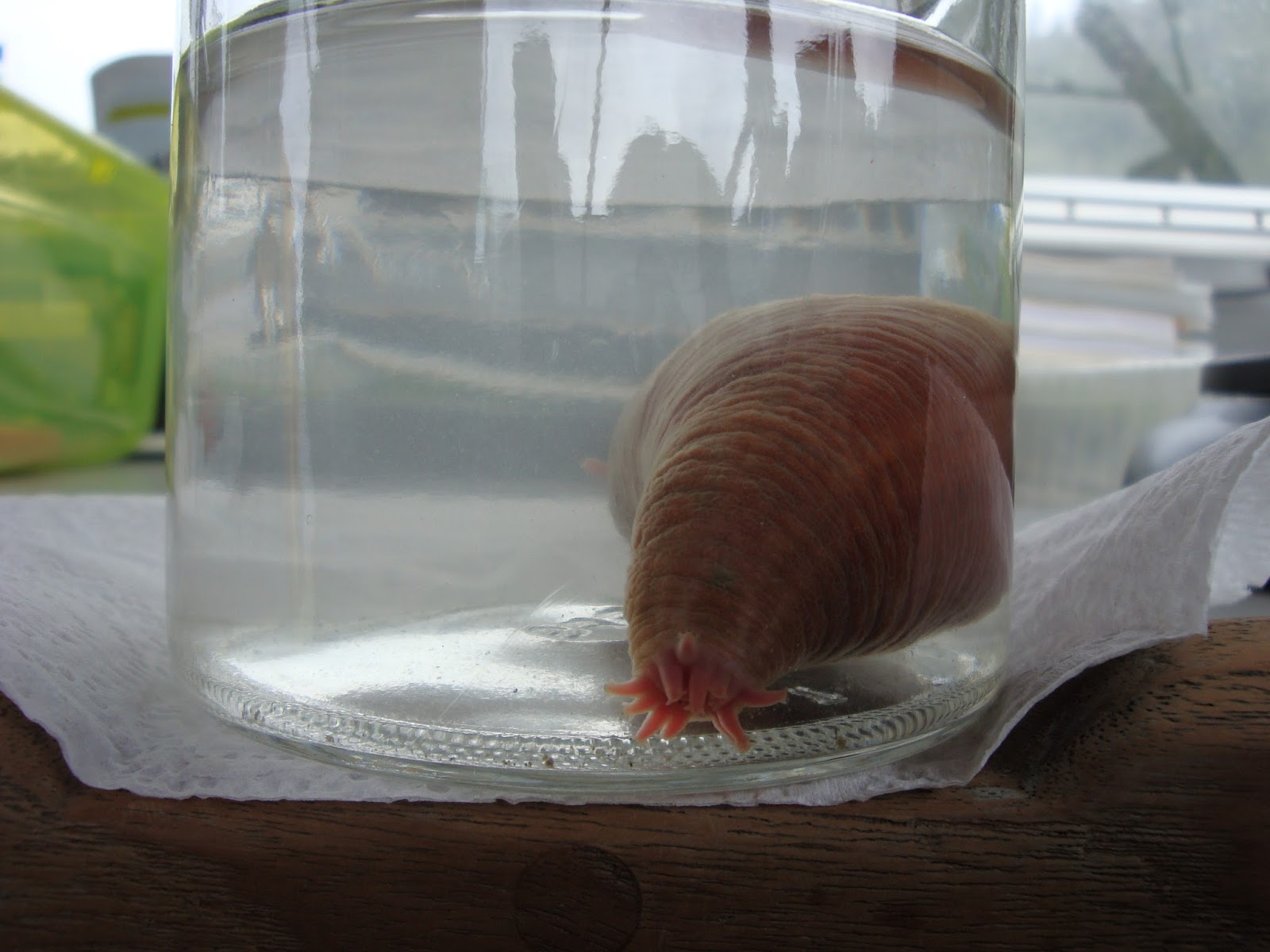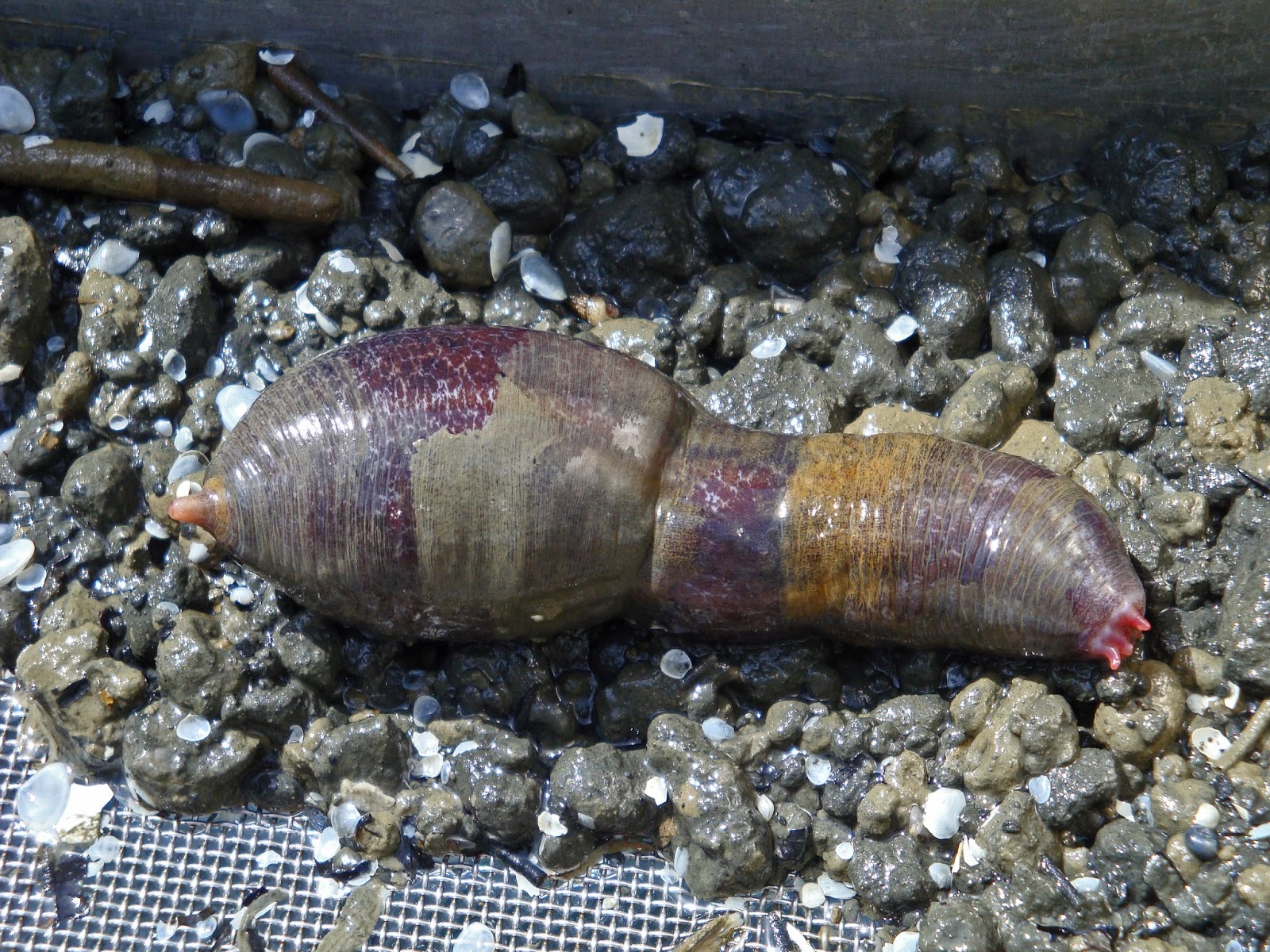Our Critter of the Month Molpadia intermedia, freshly collected from mud under Puget Sound.
Brother from another mother
Sea cucumbers like Molpadia intermedia are part of a larger group called Echinodermata that also includes sea stars, brittle stars, and sea urchins.
Superficially, sea cukes don’t look much like their echinoderm kin, but they all have three characteristics in common:
- A water vascular system made up of tubes and valves which allows movement, digestion, and breathing by pumping water throughout the body.
- Pentaradial symmetry — the body is organized in five symmetrical sections.
- An internal skeleton containing calcium carbonate.
Get under your skin
In the case of sea cucumbers, the internal skeleton takes the form of tiny particles called ossicles, embedded in the outer skin. Taxonomists can identify sea cucumbers by examining the shape of their skin ossicles under a light microscope.
M. intermedia has two kinds of ossicles:
- “Tables” — flat plates with tall, narrow spires
- Plates shaped like tennis racquets, filled with tiny holes
LEFT: Microscopic images of M. intermedia’s skin ossicles. The table images show a dorsal view
No foot to stand on
A living Molpadia specimen with its feeding tentacles extended. This individual is waiting to be weighed and measured in the field.
At one end of its body is a mouth surrounded by 15 feeding tentacles. These short, finger-like tentacles help push food into its mouth as it ingests sediment while burrowing. At the rear end of its body is a short, stubby tail.
Couch Potato
M. intermedia in a sediment sample which has been partially rinsed through a sieve.
Critter of the month
Our benthic taxonomists, Dany and Angela, share their discoveries by bringing us a benthic Critter of the Month. Dany and Angela are scientists who work for the Marine Sediment Monitoring Program. These posts will give you a peek into the life of Puget Sound’s least-known inhabitants.
In each issue we will highlight one of the Sound’s many fascinating invertebrates. We’ll share details on identification, habitat, life history, and the role this critter plays in the sediment community. Can't get enough benthos? See photos from our Eyes Under Puget Sound collection on Flickr.


